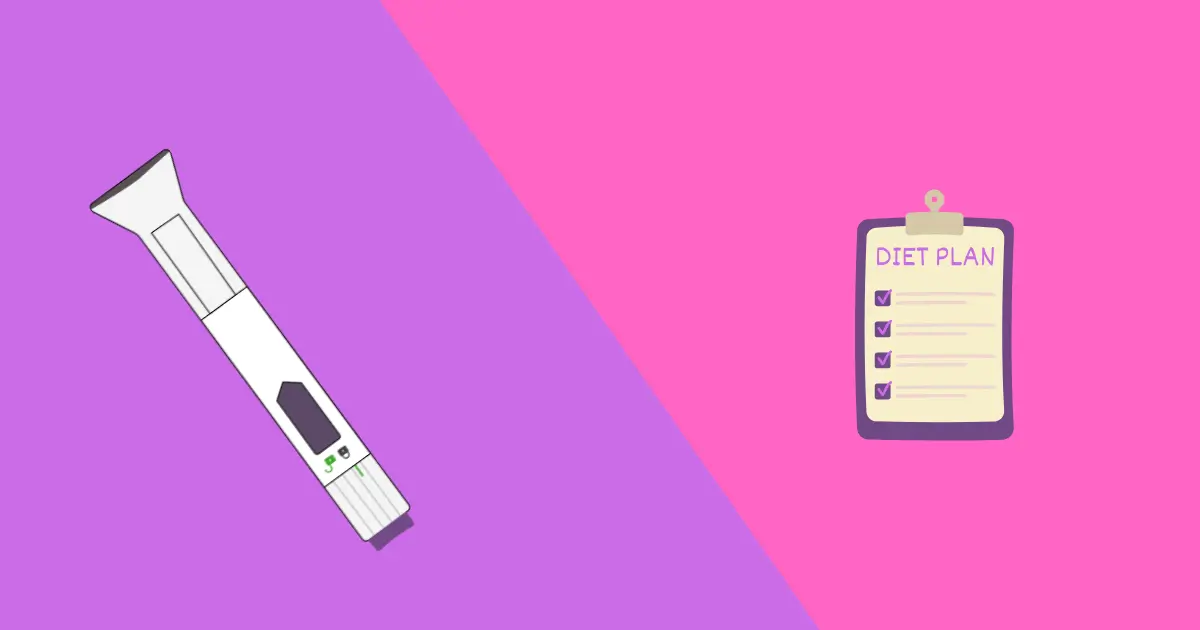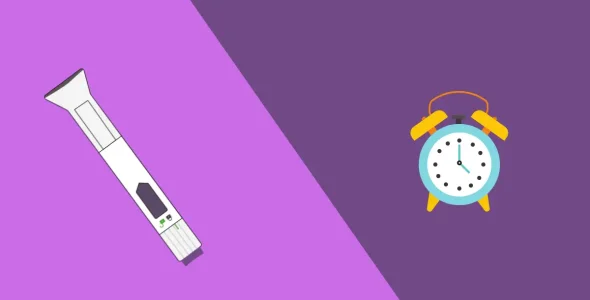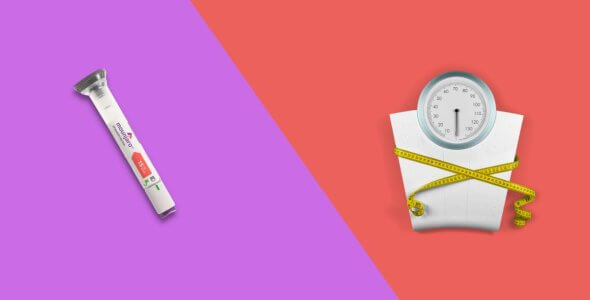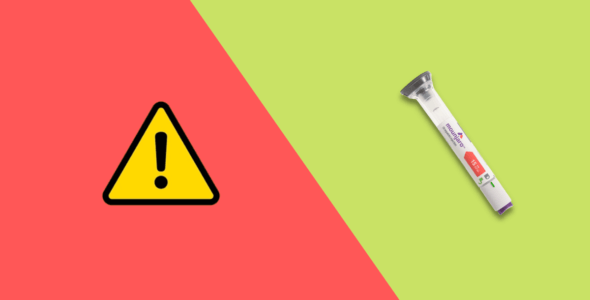Free Mounjaro diet plan PDF: What to eat and avoid for best results
Starting Mounjaro, but unsure what to eat? The right diet can boost weight loss and minimize side effects.
Key highlights
- While there's no single "Mounjaro diet," smart, balanced eating makes a major impact on the effectiveness of the medication.
- Eating well on Mounjaro boosts weight loss, controls blood sugar, and reduces side effects like nausea or constipation.
- Focus on protein-rich foods, fiber from fruits, vegetables, whole grains, and healthy fats in moderation.
- Limit greasy, fried foods, added sugars, refined carbs, processed snacks, and alcohol.
- Always check with your healthcare provider or dietitian before starting any new diet while on Mounjaro.
Mounjaro (tirzepatide) is a novel medication that works by activating both glucagon-like peptide-1 (GLP-1) and glucose-dependent insulinotropic polypeptide (GIP) receptors. It’s FDA-approved to help improve blood sugar control in adults with type 2 diabetes mellitus, but it’s also known for causing significant weight loss.
Eating the right foods helps prevent nausea, a common side effect, especially during dose increases. A balanced diet also helps maintain muscle mass while losing fat, enhancing your overall results, both for weight loss and blood sugar control.
There is no official “Mounjaro diet plan PDF” released by the manufacturer, but following a smart eating strategy is essential for the best results. Whether you’re taking Mounjaro (tirzepatide) for weight loss or diabetes, the right diet can help manage side effects, support fat loss, and improve blood sugar control.
We’ve created a downloadable Mounjaro Diet Plan PDF to make this easier. It includes meal ideas, portion tips, foods to avoid, protein and hydration guidance, and a sample 10-day menu to help you stay on track.
Download and print a Mounjaro diet plan PDF to help manage appetite and fat loss. Learn what foods to eat and avoid for maximum results.
Why do you need a specialized diet on Mounjaro?
A specialized diet is important while taking Mounjaro because the medication can significantly reduce your appetite, which may lead to undereating or missing out on key nutrients.
Mounjaro works by acting as a GIP and GLP-1 receptor agonist. This means it slows down how quickly your stomach empties, increases feelings of fullness, and improves how your body responds to insulin. These actions help control blood sugar and naturally reduce how much you eat.
Studies show that having a personalized plan is important for long-term success with these medications. Still, many people use compounded versions of them to help with weight loss.
While this is helpful for weight loss, it can also bring side effects like nausea, constipation, diarrhea, or even vomiting. A balanced diet can ease these symptoms by including gentle, fiber-rich foods, staying hydrated, and avoiding greasy or spicy meals.
Eating the right foods also helps you make the most of Mounjaro’s benefits for weight loss and blood sugar control. Since you may eat less overall, your meals need to be rich in nutrients to keep your body healthy.
It’s especially important to eat enough protein to prevent muscle loss as you lose weight. This helps your body burn fat instead of muscle, keeping you strong and supporting long-term success.
Macronutrient breakdown for Mounjaro users
All nutrients, or “macros,” are important for your health. But when you’re taking a GLP-1 medication like Mounjaro or Ozempic, some macros become even more important. Certain foods in each group can also be extra helpful.
Proteins
Muscle loss is a common side effect of GLP-1 medications like Mounjaro. A 2024 study found that 40% to 60% of the weight lost on these medications can come from muscle loss. Muscle is very important for your health and helps you keep the weight off long-term. That’s why it’s important to eat enough protein while following a Mounjaro diet plan.
Nutrition guidelines recommend eating at least 0.8 grams of protein per kilogram of body weight (or 0.36 grams per pound) each day. For example, if you weigh 175 pounds, you should consume at least 63 grams of protein daily. However, this is just the minimum recommendation. Experts also suggest that 10% to 35% of your daily calories should come from protein, which usually means you’ll need more than the minimum amount to stay healthy and strong.
Here’s how much protein you might need each day based on your calorie intake:
- If you eat 1,200 calories a day, aim for 30 to 105 grams of protein
- If you eat 1,500 calories a day, aim for 38 to 132 grams of protein
- If you eat 1,800 calories a day, aim for 45 to 158 grams of protein
- If you eat 2,000 calories a day, aim for 50 to 175 grams of protein
Healthy fats
Fats are essential for hormone balance, brain health, and helping you feel full longer, especially important when your appetite is reduced on Mounjaro.
Limit saturated fats (from butter, fatty cuts of meat) and avoid trans fats (often found in fried or processed foods). Stick to about 40–70 grams of fat per day, depending on your total calorie needs and weight loss goals.
Carbs
Carbs give you energy, but on Mounjaro, since appetite is reduced and blood sugar control improves, you don’t need as many as usual. A good range is around 100 to 150 grams of carbs per day, depending on your activity level and goals.
Avoid or limit refined carbs like white bread, sugary snacks, soda, and processed foods. Fiber helps with digestion and can ease side effects like constipation while keeping you full longer.
For Mounjaro users, a balanced macronutrient breakdown supports weight loss, muscle maintenance, and steady blood sugar.
The best macro ratio for a Mounjaro diet
Now that you know which foods and nutrients (macros) to focus on, you might be wondering what the best macro ratio is while on a Mounjaro diet plan. There’s no one perfect ratio proven by research, but using a balanced range can help you get the most out of your meals, especially by prioritizing protein and making room for healthy high-fiber carbs.
Here’s a simple macro range to follow, based on general nutrition guidelines but tailored for GLP-1 users:
- Protein: 25% to 35% of your daily calories
- Carbs: 45% to 55% of your daily calories
- Fat: 10% to 30% of your daily calories
Everyone’s needs are different, so feel free to adjust these numbers if they don’t work for you. The goal is to eat in a way that supports your health and fits your lifestyle.
Best foods to eat on Mounjaro
When you’re taking Mounjaro (or other GLP-1 medications), choosing the right foods is key. Since your appetite is lower, every bite should count. Focus on nutrient-rich foods that support your health, energy, and weight loss goals.
Proteins
Protein keeps you full longer (satiety), helps prevent muscle loss, and supports your metabolism. Since GLP-1 medications can lead to muscle loss along with fat loss, eating enough protein is especially important.
Aim for 0.8 to 1.2 grams of protein per kilogram of body weight, or around 25% to 35% of your daily calories. For most people, that’s about 60–130 grams of protein per day, depending on your weight and calorie intake.
Examples of healthy protein foods include:
- Lean meats: chicken breast, turkey, lean beef, pork loin
- Fish: salmon, cod, tuna, trout
- Eggs
- Nuts and seeds
- Dairy: Greek yogurt, cottage cheese, milk, kefir (low-fat/unsweetened)
- Legumes: beans, lentils, chickpeas
- Plant-based: tofu, tempeh, edamame, quinoa
- Protein powders: whey, casein, plant-based
Fiber-rich carbs
Constipation is another common side effect when following a Mounjaro diet plan. A 2024 study found that about 30% of people taking GLP-1 medications like Mounjaro, Ozempic, Wegovy, or Zepbound experience constipation, especially in the first few weeks.
To help prevent this and get important nutrients, it’s important to choose the right kind of carbs. Go for quality carbohydrates that are high in fiber, vitamins, and minerals. Fiber not only helps relieve constipation but also keeps you feeling full for longer after meals.
The best sources of carbs are:
- Whole grains: oats, brown rice, barley, quinoa, legumes, whole-wheat bread/pasta
- Fruits: berries, apples, pears, oranges, grapefruit (focus on whole fruits)
- Non-starchy vegetables: broccoli, spinach, kale, peas, bell peppers, leafy greens, asparagus, cauliflower, zucchini, carrots
- Starchy vegetables: sweet potatoes, corn, peas, butternut squash (in moderation)
Healthy fats
Most people get enough fat in their diet without trying, since many foods naturally contain fat or have fat added during cooking. When you’re on a Mounjaro diet plan, the type of fat you eat matters.
It’s best to choose healthy fats like monounsaturated and polyunsaturated fats (found in plant-based oils, nuts, seeds, and fish). These fats can help lower your risk of heart disease and stroke. Try to limit saturated fats, which are found in foods like butter, fatty meats, and fried foods, because they can raise your risk of health problems.
Healthy fats are found in foods like:
- Avocado
- Nuts and seeds: almonds, walnuts, chia seeds, flax seeds, sesame seeds
- Olive oil
- Avocado oil
- Tofu
- Dark chocolate
- Fatty fish: salmon, mackerel, tuna
Foods to limit or avoid on Mounjaro
When you’re on Mounjaro, it’s important to be mindful of certain foods that may worsen side effects or interfere with how the medication works.
High-fat, greasy, and fried foods
High-fat, greasy, and fried foods are at the top of the list to limit or avoid. These types of foods can intensify common gastrointestinal side effects like nausea, bloating, or stomach discomfort.
Since Mounjaro already slows gastric emptying to help you feel fuller longer, adding heavy, hard-to-digest meals can increase digestive discomfort and make you feel worse.
Examples of foods to be cautious with include:
- Fried chicken
- Greasy burgers
- Creamy pasta
- Heavy cream sauces
- Excessive butter/oil
Instead of these unhealthy foods, aim for lighter cooking methods like baking, steaming, or grilling, and choose lean proteins and heart-healthy fats in moderation. Making these changes can help your body adjust more comfortably to Mounjaro and support your overall weight loss and blood sugar goals.
Sugary drinks and added sugars
While taking Mounjaro, it’s important to avoid sugary drinks and foods high in added sugars. These items offer little to no nutritional value and are packed with empty calories that can quickly stall weight loss.
More importantly, they cause rapid spikes in blood sugar, followed by crashes that may trigger hunger and cravings, making it harder to manage appetite and blood glucose levels effectively.
Common examples of unhealthy drinks and foods with added sugars include:
- Soda
- Fruit juice (even 100% juice contains a high natural sugar load)
- Sweetened beverages like iced tea or flavored coffees
- Sweet tea
- Candy, pastries, and cookies
These items not only work against Mounjaro’s appetite-regulating effects but can also contribute to insulin resistance over time.
Opt for water, herbal teas, or sparkling water with a splash of lemon or cucumber instead, and choose whole fruits over fruit juices to get fiber along with natural sweetness. This approach supports the medication’s benefits and helps build long-term healthy habits.
Refined carbohydrates (in excess)
Refined carbs, especially when eaten in excess, can sabotage your progress on Mounjaro. These foods are stripped of fiber and nutrients during processing, so they are less filling and more likely to cause blood sugar spikes.
Since Mounjaro helps regulate appetite and improve insulin sensitivity, eating too many refined carbs can counteract that by increasing hunger and energy crashes.
Common examples of refined carbohydrates include:
- White bread
- White pasta
- White rice
These foods digest quickly and leave you less full and more likely to overeat later.
Instead, choose whole grain options like whole wheat bread, brown rice, quinoa or legumes, which have more fiber and keep you full longer. Making this switch helps with steady blood sugar and enhances your treatment.
Highly processed foods and ultra-processed snacks
While on Mounjaro, it’s best to limit highly processed and ultra-processed foods. These items are typically low in nutrients but high in unhealthy fats, added sugars, and sodium.
Even though Mounjaro helps reduce appetite, these foods can override satiety signals, making it easier to overeat despite feeling full more quickly.
Examples include:
- Chips
- Cookies
- Fast food
- Most packaged snacks, like crackers or sugary breakfast bars
These products are designed to be hyper-palatable, meaning they trigger cravings and can disrupt your progress by promoting poor eating habits.
Instead, focus on minimally processed, whole foods such as fresh fruits, vegetables, lean proteins, and whole grains. These nourish your body, support digestive health, and help you make the most of Mounjaro’s appetite-regulating and blood sugar-lowering effects.
Alcohol (in moderation or avoid)
Alcohol is best consumed in moderation or avoided altogether while taking Mounjaro. It provides empty calories with no nutritional benefit and can interfere with your weight loss and blood sugar goals. More importantly, alcohol can worsen dehydration, which is a concern since Mounjaro may already cause gastrointestinal side effects like nausea and vomiting.
Additionally, Mounjaro can increase your sensitivity to alcohol, meaning you may feel its effects more strongly even with smaller amounts. There’s also a risk of low blood sugar, especially if alcohol is consumed without food or alongside diabetes medications.
If you choose to drink alcohol, do so cautiously and sparingly. Opt for lighter options like a small glass of wine or a low-sugar cocktail, and always stay hydrated. Talk to your healthcare provider about whether alcohol is safe for you while on Mounjaro, especially if you have other health conditions or take additional medications.
Managing common Mounjaro side effects through diet
Nausea, vomiting, constipation, and diarrhea are among the most common side effects when starting Mounjaro, but the right dietary choices can help ease these symptoms.
Nausea and vomiting
Nausea and occasional vomiting are among the most common side effects when starting Mounjaro, but the right dietary choices can help ease these symptoms.
- Eat smaller, more frequent meals throughout the day instead of large portions
- Choose bland, easy-to-digest foods (toast, crackers, rice, applesauce, lean proteins such as boiled chicken or eggs)
- Avoid fatty, greasy, or spicy foods
- Stay hydrated with small sips of clear liquids like water, broth, or electrolyte drinks
- Ginger (tea, chews) can help.
- Don’t lie down immediately after eating
- Sit upright for at least 30–60 minutes after eating
Constipation
With the right combination of fiber, fluids, and movement, most people find relief and improved comfort over time.
- Increase fiber intake (gradually) from fruits, vegetables, whole grains, legumes
- Drink plenty of water
- Incorporate light physical activity like walking or gentle stretching
- Consider mild laxatives (with your healthcare provider’s approval)
Diarrhea
Diarrhea can occasionally occur when starting Mounjaro as your digestive system adjusts.
- Stay hydrated with water and electrolytes (like oral rehydration solutions, clear broths, or diluted sports drinks)
- Choose bland, low-fiber foods (BRAT diet: bananas, rice, applesauce, toast) temporarily
- Avoid greasy, spicy, or high-fiber foods until symptoms resolve
Once symptoms improve, you can slowly reintroduce fiber and other regular foods. If diarrhea is persistent or severe, consult your healthcare provider to rule out other causes or complications.
Decreased appetite and food aversions
Mounjaro is designed to reduce appetite, but this can sometimes lead to eating too little or developing aversions to certain foods.
- Focus on nutrient-dense foods
- Small, frequent meals/snacks throughout the day instead of relying on large meals
- Ensure protein intake, such as eggs, Greek yogurt, tofu, fish, or lean meats
- Experiment with food textures and temperatures (some people tolerate cold foods like smoothies or yogurt better, while others prefer warm soups or soft-cooked meals)
10-day Mounjaro diet plan
The best diet plan provides your body with the nutrients it needs and is also easy for you to stick to. This sample GLP-1 diet plan is a good starting point to help you build a routine that works for you. You can print the Mounjaro Diet Plan PDF and keep it somewhere you’ll see it often, like on your fridge. It can also help you plan your grocery shopping.
Day 1
Breakfast (400 calories)
- 2 scrambled eggs with cooked spinach and chopped tomatoes
- 1 slice of whole-grain toast
- 1 teaspoon olive oil for cooking
- 1 cup green tea with a little grated ginger
Lunch (450 calories)
- Grilled chicken breast (4 oz)
- Quinoa and steamed broccoli
- 1 teaspoon olive oil drizzled on top
- Lemon-ginger dressing (made with lemon juice, grated ginger, and olive oil)
Afternoon snack (150 calories)
- ¾ cup Greek yogurt with chia seeds
Dinner (500 calories)
- Baked salmon (4 oz)
- Roasted Brussels sprouts
- ½ cup mashed sweet potato
- 1 teaspoon olive oil for roasting
Day 2
Breakfast (400 calories)
- Oatmeal (½ cup) made with almond milk, cinnamon, and chopped walnuts
- ½ banana
- 1 teaspoon honey
- Ginger-turmeric tea
Lunch (450 calories)
- Lentil soup with a whole-wheat pita
- Mixed greens with cucumbers and tomatoes
- Lemon-ginger dressing
- 1 boiled egg
Afternoon snack (150 calories)
- Hummus with carrot and celery sticks
Dinner (500 calories)
- Stir-fried tofu (4 oz) with brown rice
- Cooked bok choy and bell peppers in sesame oil
- ½ teaspoon grated ginger added to the stir-fry
Day 3
Breakfast (400 calories)
- Spinach banana smoothie with Greek yogurt, almond milk, chia seeds, and a bit of ginger (optional)
Lunch (450 calories)
- Turkey and avocado wrap in a whole wheat tortilla
- Side salad with balsamic dressing
Afternoon snack (150 calories)
- Cottage cheese with flaxseeds
Dinner (500 calories)
- Baked cod (4 oz)
- Roasted asparagus
- ½ cup quinoa
- Topped with lemon-ginger sauce
Day 4
Breakfast (400 calories)
- Scrambled eggs with feta cheese, cooked kale, and mushrooms
- 1 slice of whole-wheat toast
- Green tea with ginger
Lunch (450 calories)
- Chickpea salad with cucumbers, tomatoes, and olive oil
- 1 small whole-wheat pita
Afternoon snack (150 calories)
- Apple with peanut butter
Dinner (500 calories)
- Shrimp stir-fry with brown rice
- Bell peppers, snow peas, and a bit of ginger cooked together
Day 5
Breakfast (400 calories)
- Greek yogurt with blueberries, almonds, and a little honey
- Green tea with ginger
Lunch (450 calories)
- Quinoa bowl with grilled chicken, roasted sweet potatoes, and cooked kale
- Topped with lemon-ginger dressing
Afternoon snack (150 calories)
- A handful of almonds and walnuts
Dinner (500 calories)
- Grilled salmon
- Sautéed Brussels sprouts
- ½ cup brown rice
- Steamed broccoli
Day 6
Breakfast (250 calories)
- 2 scrambled eggs
- ½ cup cooked spinach (about 90g)
- 1 slice whole grain toast (28g)
Lunch (400 calories)
- Grilled chicken breast (4 oz or 112g)
- ½ cup cooked quinoa (93g)
- 1 cup roasted vegetables (150g)
Afternoon snack (130 calories)
- ½ cup baby carrots (50g)
- 2 tablespoons hummus (30g)
Dinner (450 calories)
- Turkey burger patty (4 oz or 112g, no bun)
- ½ medium sweet potato (100g)
- 1 cup mixed greens (85g)
Day 7
Breakfast (350 calories)
- Smoothie with 1 scoop protein powder (30g), 1 cup almond milk (240ml), and ½ cup strawberries (75g)
Lunch (400 calories)
- Grilled salmon (4 oz or 112g)
- 2 cups mixed greens (85g)
- 1 tablespoon olive oil (15g) as dressing
- ½ cup cooked quinoa (93g)
Afternoon snack (150 calories)
- 1 small apple (150g)
- 14 almonds (14g)
Dinner (500 calories)
- Grilled chicken stir-fry (4 oz or 112g)
- ½ cup brown rice (93g)
- 1 cup broccoli (150g)
Day 8
Breakfast (350 calories)
- Greek yogurt (¾ cup, 170g, plain, nonfat)
- ½ banana (60g), sliced
- 1 tablespoon chia seeds (12g)
- Cinnamon for flavor
Lunch (400 calories)
- Grilled turkey breast (4 oz or 112g)
- 2 cups spinach (85g)
- 1 tablespoon olive oil (15g) + vinegar for dressing
- ½ cup roasted sweet potato (100g)
Afternoon snack (150 calories)
- 1 boiled egg
- 1 medium cucumber (150g), sliced
Dinner (500 calories)
- Baked cod (4 oz or 112g) with lemon and herbs
- ½ cup cooked farro (95g)
- 1 cup steamed green beans (125g)
- 1 teaspoon butter (5g)
Day 9
Breakfast (350 calories)
- Oats (¼ cup dry, 20g) cooked in 1 cup unsweetened almond milk
- 1 tablespoon peanut butter (16g)
- ½ cup blueberries (75g)
Lunch (400 calories)
- Grilled shrimp (4 oz or 112g)
- 2 cups arugula & lettuce mix (85g)
- 1 tablespoon avocado oil (15g)
- ½ cup chickpeas (82g), rinsed
Afternoon snack (150 calories)
- Low-fat cheese stick (28g)
- 1 small pear (130g)
Dinner (500 calories)
- Ground chicken lettuce wraps (4 oz ground chicken, romaine leaves)
- ½ cup brown rice (93g)
- ½ cup sautéed bell peppers & onions (75g)
Day 10
Breakfast (350 calories)
Smoothie with:
- 1 scoop protein powder (30g)
- 1 cup unsweetened almond milk (240ml)
- ½ cup mango chunks (75g)
- 1 tablespoon flaxseeds (7g)
Lunch (400 calories)
- Grilled tofu (4 oz or 112g)
- 2 cups kale (85g), massaged with lemon juice
- 1 tablespoon tahini dressing (15g)
- ½ cup cooked couscous (91g)
Afternoon snack (150 calories)
- 10 walnut halves (14g)
- 5 cherry tomatoes (100g)
Dinner (500 calories)
- Baked chicken breast (4 oz or 112g)
- ½ cup mashed cauliflower (100g)
- 1 cup sautéed zucchini (120g) with garlic
- 1 teaspoon olive oil (5g)
Maximizing your success with Mounjaro beyond diet
While a healthy diet is essential for weight loss with Mounjaro (tirzepatide), long-term success also depends on key lifestyle habits.
Here’s how to enhance your results:
Regular physical activity
Exercise supports weight loss, preserves muscle mass, and improves heart health and mood. Aim for at least 150 minutes of moderate-intensity cardio (e.g., brisk walking, swimming) per week. It’s also recommended to have at least 2 sessions of strength training (bodyweight or resistance workouts) per week to build and maintain muscle.
Consistent medication use
Always take Mounjaro exactly as prescribed by your healthcare provider. Stick to your dosing schedule to maintain steady blood levels and optimize appetite control.
Prioritize sleep & manage stress
Aim for 7–9 hours per night. Poor sleep affects hunger hormones and can lead to overeating. High stress can raise cortisol, promoting fat storage and emotional eating. Use tools like meditation, deep breathing, or light activity to manage stress.
Get professional support
Work closely with your doctor to monitor progress, adjust dosing, and manage side effects. A registered dietitian can help personalize your meal plan, prevent nutritional gaps, and support sustainable lifestyle changes.
Mounjaro diet plan FAQs
Is there an official Mounjaro diet plan PDF?
There’s no official Mounjaro-branded “diet plan” PDF; the medication is prescribed alongside a healthy, balanced diet. You can find sample meal plans from third-party nutritionists, but Mounjaro itself doesn’t provide a downloadable diet guide.
What should I eat on Mounjaro?
When taking Mounjaro, focus on eating lean protein, vegetables, whole grains, and healthy fats to keep you full and support weight loss. Avoid sugary, fried, and highly processed foods, as they can cause stomach upset and slow your progress.
What foods should I avoid on Mounjaro?
Avoid greasy, fried, and high-fat foods, as they can make nausea or stomach issues worse on Mounjaro. Also, try to limit sugary snacks, drinks, and processed foods that can slow weight loss.
Can I drink alcohol while on Mounjaro?
You can drink alcohol while taking Mounjaro, but it’s best to limit it. Alcohol can affect blood sugar levels and may increase side effects like nausea or dizziness.
How can I manage side effects (nausea, constipation, diarrhea) through diet?
To manage side effects like nausea, constipation, or diarrhea, eat small meals, stay hydrated, and choose gentle foods like bananas, rice, toast, and plain chicken. Add fiber slowly to your diet for constipation, and avoid greasy or spicy foods if you have nausea or diarrhea.
What are good protein sources on Mounjaro?
Good protein sources on Mounjaro include chicken, fish, eggs, tofu, Greek yogurt, and beans. These foods help keep you full, support muscle health, and are gentle on the stomach.
How much protein should I eat on Mounjaro?
Most people on Mounjaro should aim for 60 to 100 grams of protein per day, depending on their weight and activity level. Try to include some protein at every meal to stay full and support muscle health.
What about carbohydrates and fats?
Most people on Mounjaro can eat about 100 to 150 grams of carbs and 40 to 70 grams of healthy fats each day. Choose carbs from fruits, veggies, and whole grains, and fats from nuts, seeds, and olive oil.
Do I need to count calories on Mounjaro?
You don’t have to count calories on Mounjaro, but it can help if you’re not losing weight or want to track your progress. Many people naturally eat less on Mounjaro because it helps reduce hunger.
How important is hydration?
Hydration is very important on Mounjaro because it helps with digestion, prevents constipation, and supports weight loss. Aim to drink at least 8 cups (2 liters) of water a day, or more if you’re active.
How can I prevent muscle loss while losing weight on Mounjaro?
To prevent muscle loss while on Mounjaro, eat enough protein every day and do strength exercises like lifting weights or using resistance bands. This helps your body burn fat instead of muscle as you lose weight.
What role does exercise play with Mounjaro?
Exercise helps you lose more fat, keep your muscles strong, and feel better while taking Mounjaro. Aim for regular movement like walking, biking, or light strength training to boost your results.
Should I consult a dietitian or healthcare professional?
Yes, it’s a good idea to talk to a dietitian or healthcare provider while using Mounjaro. They can help you create a safe and effective plan that fits your health needs and goals.
Conclusion
A thoughtful diet is essential for maximizing results with Mounjaro while minimizing uncomfortable side effects.
What you eat can impact how well you tolerate the medication, how it supports your weight and blood sugar goals and how you feel day to day.
There is no one-size-fits-all Mounjaro diet plan PDF, but the foundation is a balanced, protein-rich, fiber-filled, minimally processed way of eating. Add in professional guidance and small, sustainable changes, and you’ll be set up for success.
Your journey with Mounjaro is about more than medication; it’s about becoming a healthier, more confident you.






